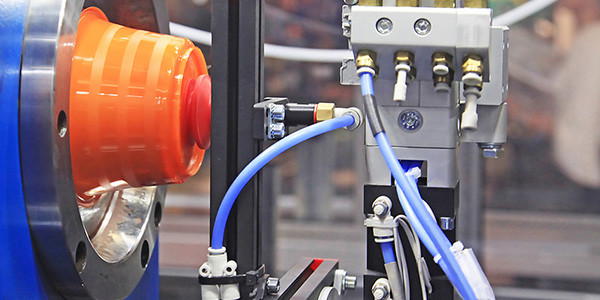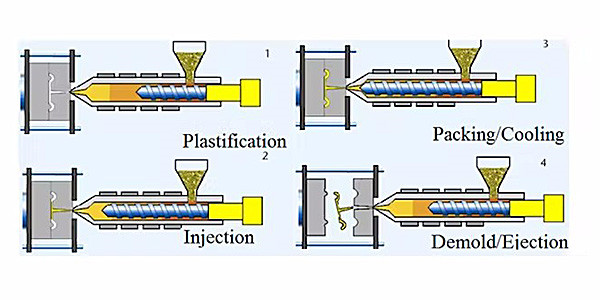What is plastic injection molding

Thermoplastic injection molding is a method for manufacturing high-volume parts with plastic materials. Due to its reliability and flexibility in design options, injection molding is used in many industries, including: packaging, consumer & electronics, automotive, medical, and many more.
Injection molding is one of the most widely used manufacturing processes in the world. Thermoplastics are polymers that soften and flow when heated, and solidify as they cool.
Applications
Injection molding is the most common modern method of manufacturing plastic parts; it is ideal for producing high volumes of the same object. Injection moulding is used to create many things, including wire spools, packaging, bottle caps, automotive parts and components, gaming consoles, pocket combs, musical instruments, chairs and small tables, storage containers, mechanical parts, and many other plastic products.

Mold design
After a product is designed in Software like a CAD package, molds are created from metal, usually steel or aluminum, and precision-machined to form the features of the desired part. The mold consists of two primary components, the injection mold (A plate) and the ejector mold (B plate). Plastic resin enters the mold through a sprue, or gate, and flows into the mold cavity via channels, or runners, that are machined into the faces of the A and B plates.
Injection molding process
When thermoplastics are molded, typically pelletized raw material is fed through a hopper into a heated barrel with a reciprocating screw. The screw delivers the raw material forward, through a check valve, where it collects at the front of the screw into a volume known as a shot.
The shot is the amount of resin required to fill the sprue, runner and cavities of a mold. When enough material has gathered, the material is forced at high pressure and velocity into the part forming cavity.

How Does Injection Molding Work?
Once the plastic has filled the mold including its sprues, runners, gates, etc., the mold is kept at a set temperature to allow uniform solidification of the material into the part shape. A holding pressure is maintained while cooling to both stop backflow into the barrel and reduce shrinking effects. At this point, more plastic granules are added to the hopper in expectation of the next cycle (or shot). When cooled, the platen opens and allows the finished part to be ejected, and the screw is drawn back once more, allowing material to enter the barrel and start the process over again.

The injection molding cycle works by this continuous process—closing the mold, feeding/heating the plastic granules, pressurizing them into the mold, cooling them into a solid part, ejecting the part, and closing the mold again. This system allows for the rapid production of plastic parts, and upwards of 10,000 plastic parts can be made in a workday depending upon the design, size, and material.
Injection molding cycle
The injection molding cycle is very short, typically between 2 seconds and 2 minutes long. There are several stages:
1.Clamping
Before injecting the material into the mold, the two halves of the mold are closed, securely, by the clamping unit. The hydraulically powered clamping unit pushes the mold halves together and exerts sufficient force to keep the mold closed while the material is injected.
2.Injection
With the mold closed, the polymer shot is injected into the mold cavity.
3.Cooling
When the cavity is filled, a holding pressure is applied which allows more polymer to enter the cavity to compensate for plastic shrinking as it cools. In the meantime, the screw turns and feeds the next shot to the front screw. This causes the screw to retract as the next shot is prepared.
4.Ejection
When the part has cooled sufficiently, the mold opens, the part is ejected, and the cycle starts again.
Advantages
1.Fast production; 2.Design flexibility; 3.Accuracy; 4.Low labor costs; 5.Low waste



